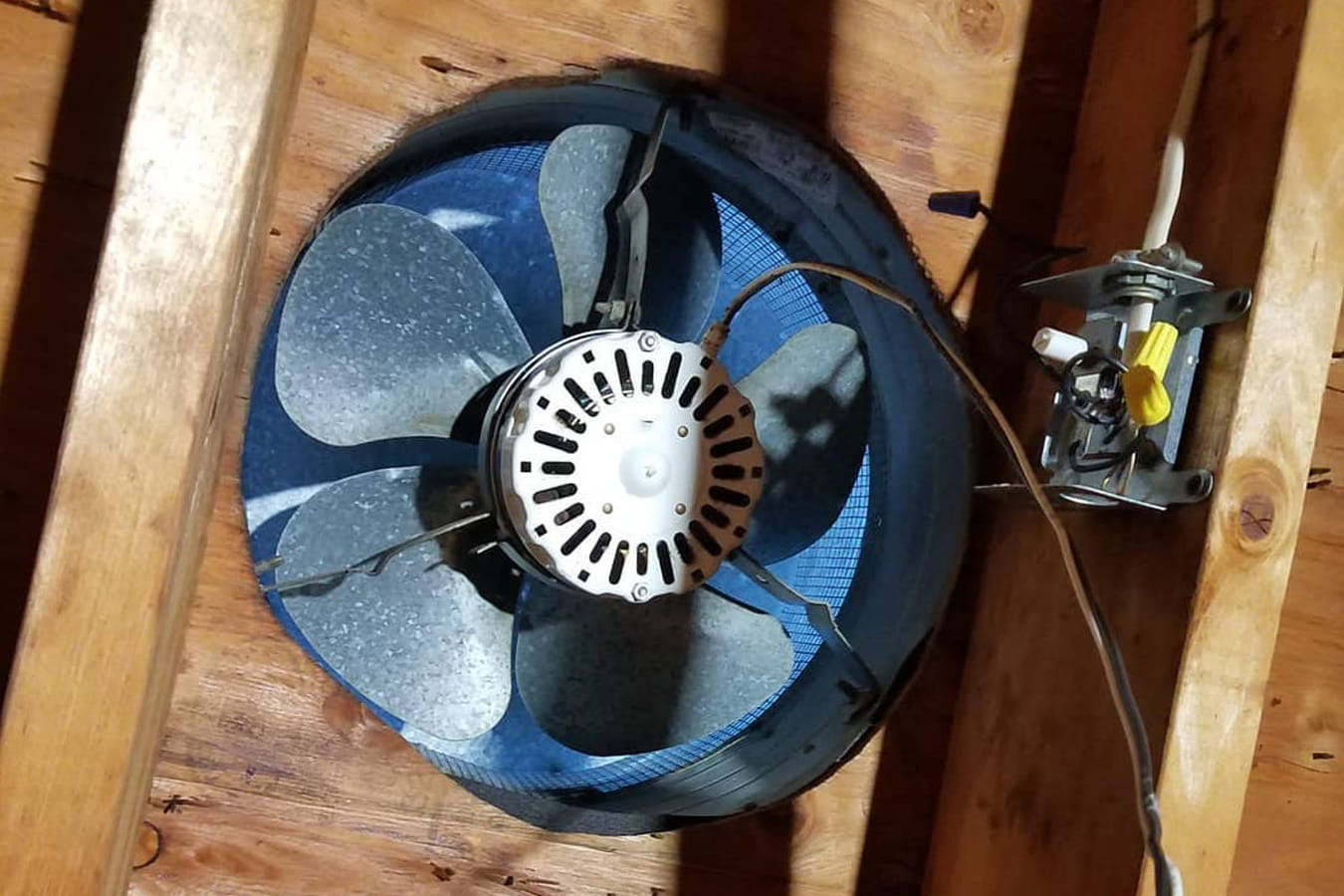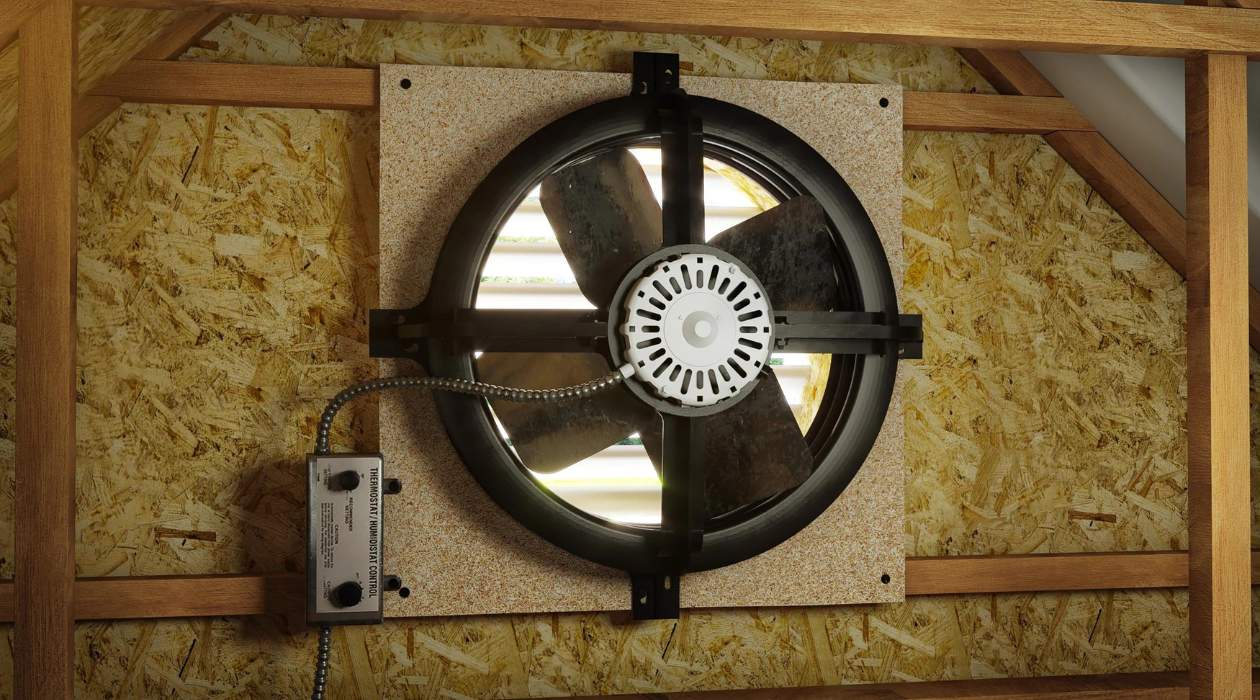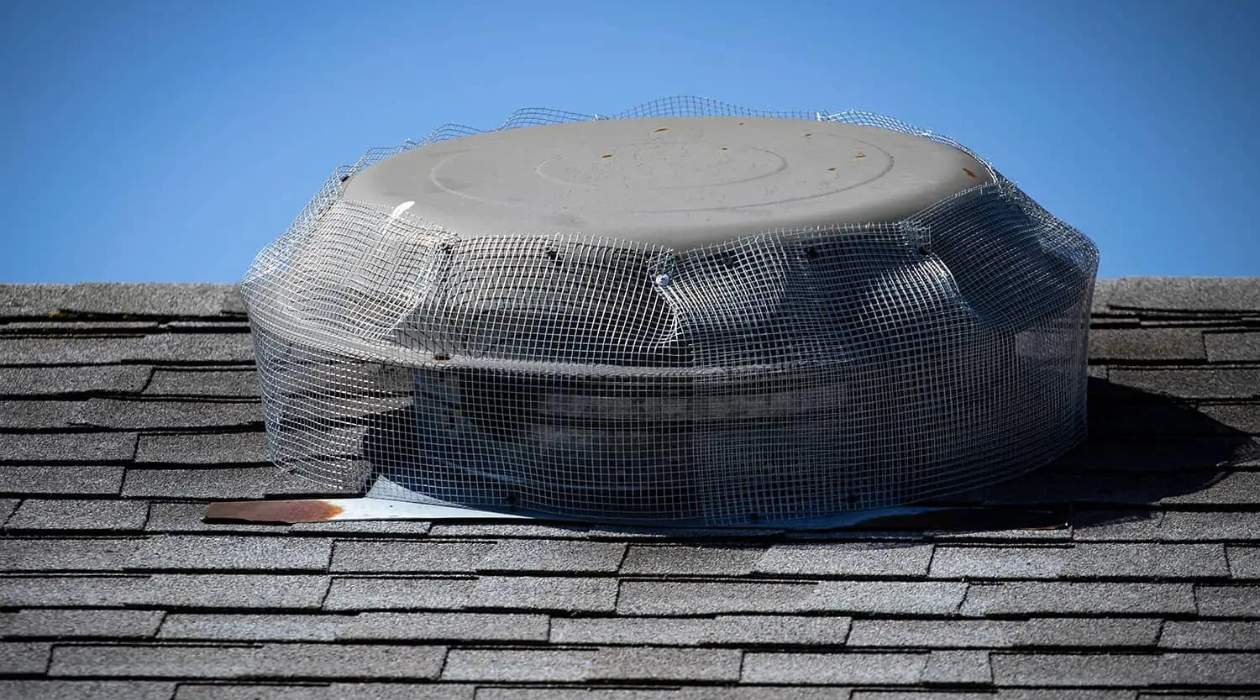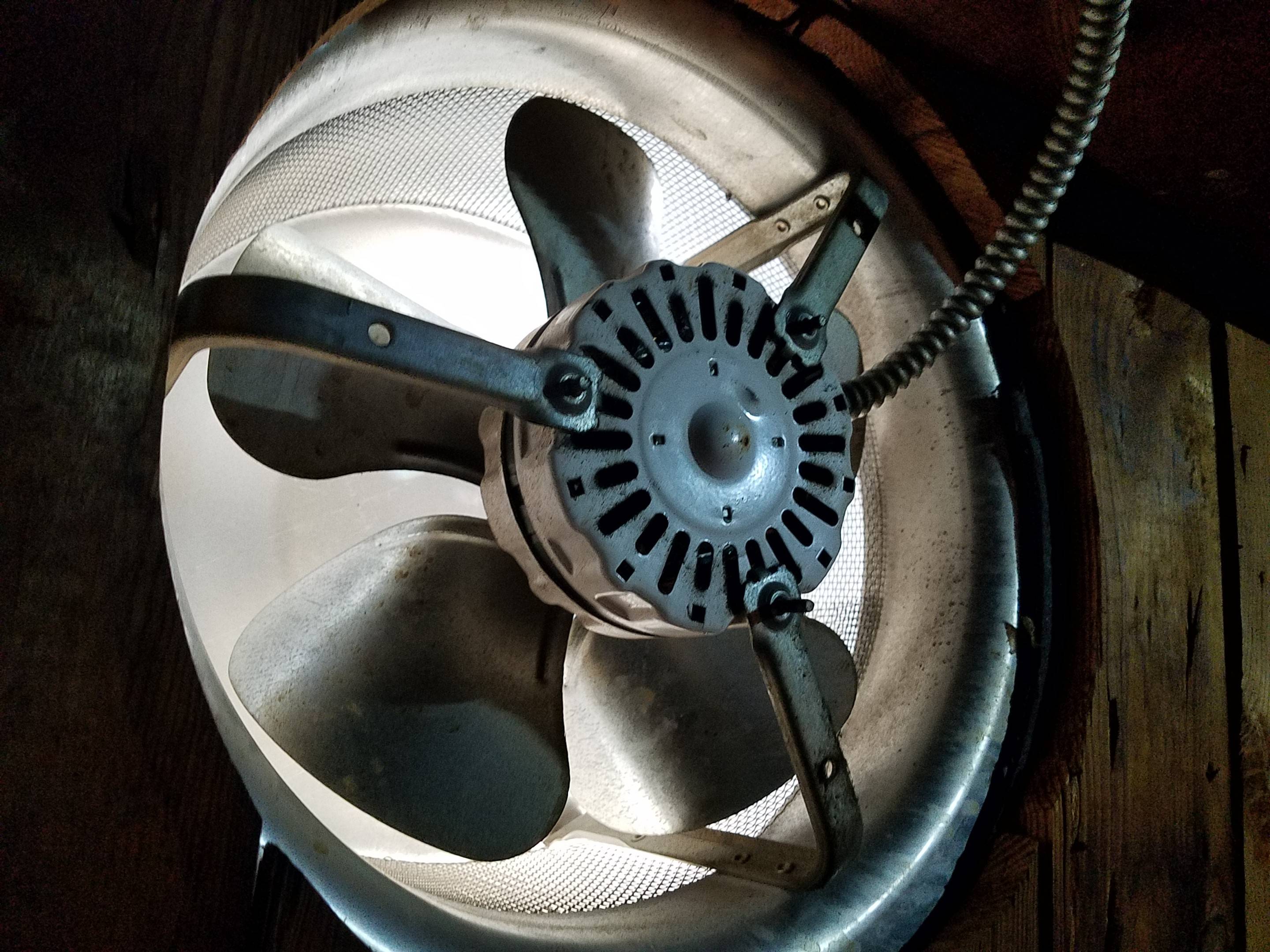

Articles
How Long Does An Attic Fan Last
Modified: February 1, 2024
Discover how long an attic fan can last with our informative articles. Find out the average lifespan and maintenance tips to ensure optimal performance.
(Many of the links in this article redirect to a specific reviewed product. Your purchase of these products through affiliate links helps to generate commission for Storables.com, at no extra cost. Learn more)
Introduction
Attic fans play a crucial role in maintaining a comfortable and energy-efficient home. They help regulate the temperature and humidity levels in the attic, preventing damage to the roof and reducing the strain on your HVAC system. However, like any mechanical device, attic fans have a limited lifespan and require replacement at some point. So, how long does an attic fan last?
The lifespan of an attic fan can vary depending on several factors, such as the quality of the fan, the installation process, and the operating conditions. In this article, we will explore the factors that affect the lifespan of attic fans, signs that indicate a fan needs replacement, average lifespans for different types of fans, and tips to maximize their lifespan.
Key Takeaways:
- Regular maintenance, proper installation, and periodic inspection are vital to maximizing the lifespan of your attic fan and ensuring its continued functionality for years to come.
- Understanding the signs of a failing fan and considering factors like age, frequent breakdowns, and decreased performance can help homeowners make informed decisions when it comes to replacing their attic fan.
Read more: How Long Does Attic Insulation Last
Factors affecting the lifespan of an attic fan
The lifespan of an attic fan depends on various factors that can either prolong or shorten its useful life. Understanding these factors can help homeowners make informed decisions when it comes to buying and maintaining their attic fans.
- Quality of the fan: The quality of the fan itself has a significant impact on its lifespan. High-quality attic fans made with durable materials are likely to last longer compared to cheaper, lower-quality alternatives.
- Installation: Proper installation is crucial for the longevity of an attic fan. If the fan is not installed correctly, it can result in increased wear and tear, reducing its lifespan. It is recommended to hire a professional for installation to ensure it is done correctly.
- Operating conditions: The environment in which the attic fan operates can affect its lifespan. Excessive heat, extreme temperature changes, and high humidity levels can put additional stress on the fan, leading to premature wear and failure.
- Maintenance: Regular maintenance is essential for prolonging the lifespan of an attic fan. This includes cleaning the fan blades, removing any dirt or debris, and lubricating moving parts as necessary. Neglecting maintenance can lead to decreased performance and a shorter lifespan.
- Usage: The frequency and duration of use can impact the lifespan of an attic fan. Fans that are constantly running or operated for extended periods may experience more wear and tear than those used sporadically.
- Power supply: The quality and stability of the power supply can also affect the lifespan of an attic fan. Power surges and fluctuations can damage the fan’s motor or electrical components, leading to premature failure.
By considering these factors and taking appropriate measures, homeowners can ensure that their attic fan lasts for an extended period, providing efficient ventilation and improving the overall comfort of their home.
Signs that indicate an attic fan needs replacement
Over time, attic fans can experience wear and tear, and eventually, they may need to be replaced. Recognizing the signs that indicate a fan needs replacement can help homeowners avoid potential problems and ensure the continued functionality of their attic ventilation system. Here are some common signs that indicate an attic fan may need to be replaced:
- Noisy operation: If your attic fan starts making unusual or excessive noise, it could be an indication of worn-out bearings, a loose motor, or damaged fan blades. These issues can affect the fan’s efficiency and may require a replacement.
- Decreased airflow: One of the primary functions of an attic fan is to provide proper airflow. If you notice a significant decrease in the airflow from your attic fan or if the fan is struggling to expel hot air, it may be a sign that the fan is no longer functioning at its optimal level and needs to be replaced.
- Frequent breakdowns: If your attic fan is repeatedly experiencing malfunctions, requiring frequent repairs, it may be a sign that the fan is nearing the end of its lifespan. Investing in a new attic fan can save you the hassle and expense of constant repairs in the long run.
- Inefficiency: If your attic fan is not effectively cooling your attic or reducing the temperature as it should, it may be a sign of an inefficient fan. This can be due to worn-out parts, such as a faulty motor or damaged fan blades, and replacement may be necessary to restore optimal performance.
- Age: The age of your attic fan is also an important factor to consider. As attic fans age, their performance can decline, and they become more prone to failure. If your fan is over 10-15 years old, it might be a good time to consider replacement even if it appears to be working fine.
It is important to pay attention to these signs and not ignore any potential issues with your attic fan. Regularly inspecting and monitoring the fan’s performance can help you identify problems early on and take appropriate action, whether it be repairs or replacement, to ensure efficient attic ventilation and prevent any further damage to your home.
Average lifespan of different types of attic fans
The lifespan of an attic fan can vary depending on the type and quality of the fan. Different types of attic fans have different average lifespans due to variations in design, construction, and materials used. Here are the average lifespans of commonly used attic fan types:
- Roof-mounted attic fans: Roof-mounted attic fans are typically installed on the roof and are designed to pull hot air out of the attic. On average, these fans can last between 10 to 15 years. However, with proper maintenance and care, they can last even longer.
- Gable-mounted attic fans: Gable-mounted attic fans are installed on the gable end of the attic and are known for their efficiency in ventilating the attic space. These fans also have an average lifespan of approximately 10 to 15 years.
- Solar-powered attic fans: Solar-powered attic fans are gaining popularity due to their energy efficiency and eco-friendliness. Since they rely on solar energy to operate, their lifespan can be influenced by the quality and durability of solar panels. On average, solar-powered attic fans can last between 15 to 20 years.
- Attic vent fans: Attic vent fans, also known as whole-house fans, are installed in the ceiling or wall and are designed to pull cool air into the house while pushing hot air out through the attic. These fans have an average lifespan ranging from 10 to 15 years.
It is important to note that these are rough estimates for the average lifespans of different types of attic fans. The actual lifespan can vary depending on various factors, such as usage, maintenance, and the specific brand or model of the fan.
Regular maintenance, including keeping the fan clean, lubricating moving parts, and ensuring proper airflow, can help extend the lifespan of an attic fan regardless of its type. Additionally, investing in a high-quality fan from a reputable manufacturer can also contribute to a longer useful life.
When considering replacing an attic fan, it is best to consult with a professional to determine the most suitable type and model for your specific needs and to ensure proper installation and functionality.
Regular maintenance and proper installation can help extend the lifespan of an attic fan. On average, an attic fan can last anywhere from 10 to 15 years with proper care.
Tips for maximizing the lifespan of an attic fan
To ensure the longevity and optimal performance of your attic fan, it is essential to take proper care and maintenance. Here are some tips to help you maximize the lifespan of your attic fan:
- Regularly clean the fan: Dust and debris can accumulate on the fan blades and hinder its performance. Clean the fan regularly by removing any dirt or debris that may have built up over time. This will help prevent excessive strain on the fan motor and ensure optimal airflow.
- Inspect and clean the vents: Check the vents, both on the inside and outside of your home, to ensure they are clear of any obstructions. Obstructed vents can restrict airflow and put additional strain on the attic fan. Clean any accumulated debris or vegetation to maintain proper ventilation.
- Inspect the fan motor: Regularly check the fan motor for any signs of wear or damage. Look for loose wires, rust, or unusual noises. If you notice any issues, it is advisable to have a professional inspect and repair the motor to prevent further damage and extend the lifespan of the fan.
- Lubricate moving parts: Lubricate the moving parts of the attic fan, such as bearings or motor shafts, as recommended by the manufacturer. This helps maintain smooth operation and reduces friction, ultimately prolonging the fan’s lifespan.
- Protect from extreme temperatures: Extreme heat or cold can put stress on the attic fan and reduce its lifespan. Ensure that your attic is adequately insulated and ventilated to regulate temperature and humidity levels. This will help minimize the strain on the fan and prolong its life.
- Monitor and maintain proper power supply: Power surges and fluctuations can damage the electrical components of the attic fan. Consider installing a surge protector or voltage regulator to protect the fan from electrical issues. Additionally, ensure that the fan is properly connected to a stable and reliable power source.
- Schedule professional maintenance: It is recommended to have your attic fan inspected and maintained by a professional at regular intervals. They can check for any underlying issues, perform necessary repairs, and provide expert advice on maximizing the lifespan of your attic fan.
By following these tips, you can significantly extend the lifespan of your attic fan and ensure it continues to provide effective ventilation and cooling for your home.
Read more: How Long Does Ryobi Fan Last
When to consider replacing an attic fan
While proper maintenance can extend the lifespan of an attic fan, there comes a time when replacement is necessary. Here are some factors to consider when deciding whether it’s time to replace your attic fan:
- Age: The age of your attic fan is an important consideration. Most attic fans have an average lifespan of 10 to 15 years, depending on the type and quality. If your fan is approaching or exceeding this age range, it may be time to start considering a replacement.
- Frequent breakdowns: If your attic fan is constantly experiencing malfunctions and requires frequent repairs, it’s a clear indication that it may be nearing the end of its lifespan. Continuously investing in repairs can become costly, so it may be more economical to replace the fan altogether.
- Lack of performance: If your attic fan is no longer effectively cooling your attic or maintaining proper ventilation, it may be time for a replacement. Over time, wear and tear can impact the fan’s efficiency, resulting in decreased performance and reduced airflow.
- Excessive noise: If your attic fan has become noticeably noisier over time, it could be a sign of worn-out bearings, loose components, or damaged fan blades. If the noise is disruptive or persists even after maintenance, it may be worth considering a replacement.
- Energy efficiency: Older attic fans may not have the same energy-saving features as newer models. If you have an older fan that consumes a significant amount of electricity, upgrading to a more energy-efficient model can not only provide improved performance but also help reduce your energy bills.
- Technological advancements: Newer attic fans often come with advanced features and technologies, such as built-in thermostats, humidity sensors, or wireless connectivity. If you wish to take advantage of these added functionalities or upgrade to a more advanced system, replacing your attic fan may be necessary.
It is important to consult with a professional when considering replacing your attic fan. They can assess the condition of your current fan, provide expert advice on the most suitable replacement options, and ensure proper installation to optimize performance and longevity.
Ultimately, replacing an attic fan at the appropriate time will help ensure efficient attic ventilation, improve energy efficiency, and maintain a comfortable living environment in your home.
Conclusion
Attic fans play a vital role in maintaining a comfortable and energy-efficient home. Understanding the factors that affect their lifespan, signs indicating the need for replacement, and average lifespans of different types of fans can help homeowners make informed decisions. By following tips for maximizing the lifespan of an attic fan, such as regular cleaning and maintenance, monitoring the fan motor, and protecting it from extreme temperatures, homeowners can extend the lifespan of their attic fan and ensure optimal performance.
When it comes to replacing an attic fan, factors such as age, frequent breakdowns, decreased performance, excessive noise, energy efficiency, and technological advancements should be considered. Consulting with a professional can provide valuable insights and guidance in choosing the right replacement fan for your specific needs.
In conclusion, taking care of your attic fan and recognizing the signs of a failing fan can help you maintain a well-ventilated attic, improve energy efficiency, and prevent potential damage to your home. Regular maintenance, proper installation, and periodic inspection are vital to maximizing the lifespan of your attic fan and ensuring its continued functionality for years to come.
Frequently Asked Questions about How Long Does An Attic Fan Last
Was this page helpful?
At Storables.com, we guarantee accurate and reliable information. Our content, validated by Expert Board Contributors, is crafted following stringent Editorial Policies. We're committed to providing you with well-researched, expert-backed insights for all your informational needs.















0 thoughts on “How Long Does An Attic Fan Last”